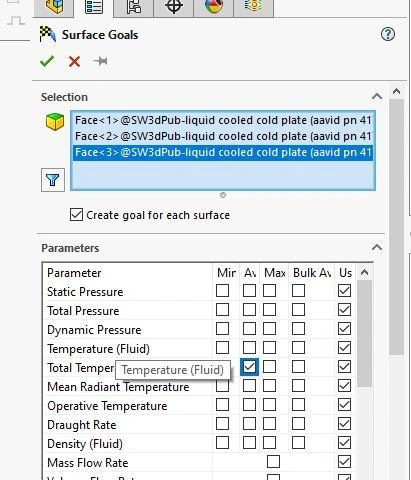
Introduction
This blog is for you if you’ve experienced Solidworks Flow Simulation but are not aware of Engineering goals or the reasons you want to use them. To address any issues, I will break this blog into 3 sections.
- Purpose of Using goals
- Types of goals and Ways of defining the goals
PURPOSE OF USING GOALS:
- To use your own criterion
- Specify goals as physical parameters at areas of interest.
- Used for Convergence Control
- Finish the calculation.
Goals primarily define your project, and you can also use them to monitor results while the solver runs. Some examples might include, if I want to perform a heat transfer analysis in a Heated cold plate and it also includes the maximum temperature of the fluid globally.

You can track the result by monitoring the goal plot. Let’s say that the fluid’s limiting temperature is 48 degrees Celsius, but the goal plot indicates that the fluid reaches above 55 degrees C within 20-30 iterations and that you must end the solution without continuing to run the solver indefinitely. You must end the solution without running the solver because the design requirements will not be met.
Thus, it provides a way to return to the project and CAD model right away to add anything you might have forgotten to put in the setup or make a design modification to increase the cooling effect.
You can examine a table of your goals or to generate one in an Excel spread sheet after you’ve solved the problem. This is excellent for giving your project a visual summary. Utilizing the goal chart in the Compare Tool also enables you to compare the outcomes of other projects where you have either changed the model geometry or a flow parameter in an instructive manner.
Goal definition helps you save time because it usually happens before the internal convergence criteria would have forced the solver to end because of the conservative structure of the software.
TYPES OF GOALS:
You can define five goal types in SolidWorks Flow Simulation
- Global Goals
- Point Goals
- Surface Goals
- Volume Goals
- Equation Goals
Where to find it– Shortcut Menu: Right click Goals in Flow Simulation analysis Tree and click Insert goals.
Global Goals:
A global goal calculates a physical parameter within the computational domain. In the image below, I have created a global goal to find out the maximum temperature of the fluid.

Point Goals:
You define a point goal by specifying a value at a certain point, either through a reference, directly on the screen, or using coordinate values.

Surface Goals:
Surface goal is a parameter on selected surface(s). You can also preselect the surface of the inlet/Outlet boundary condition as a surface to define the goal. For example, if you specify mass flow rate, you will obtain the integral value for the entire surface. Alternatively, if you select a parameter like Total Temperature, you can obtain the min, average, max, or bulk average value on that surface.

Tips:
- To select the inlet surface for the surface goal, Split the feature pane and specify the surface.
- To create the surface goals for many surfaces, Hold the control key and select all the surfaces and Click create goal for each surface

Volume Goals:
Volume goal is a parameter within a specified volume, and it can be applied to parts, subassembly components, and even bodies within multi-body parts, in other words, to anything that defines a volume.

Equation Goals:
Last, but not least importantly, is an Equation goal which can be defined using anyone of the previous goal types in a mathematical equation i.e., combining output quantities with equations. For example, to find the temperature difference it will use the previously created surface goals for temperature maximum. This new temperature difference equation goal can also be plotted and monitored during solution.

The Reynolds number of the flow field, determining the efficiency of a fan or the coefficient of drag/lift on a component, Valve flow coefficient, heat exchange efficiency, pump efficiency, Pressure drop can also be calculated using Equation goals.
Setting goals for your Solidworks Flow Simulation projects can aid in producing an accurate and efficient result. Thank you for reading and stay tuned for my next blog, which will focus on a third advantageous aspect of goals: parametric optimization!

